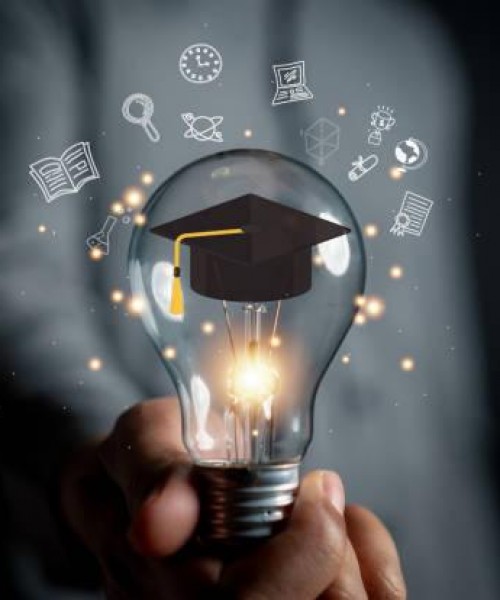Teaching character and value education is fundamental in building a moral society. The Learning's instructional designs allows the trainer intermittently reinforce the behavior in class by giving the children proper skills. The learning instructions design and evaluation covers the development aspects of children for skill development in various levels of class behavior descriptions and activities. The instructional philosophy and design provides the evaluation of success as we steer all the students to success not only in academics but also in other life activities. The lesson clearly outlines the importance of rectifying children behaviors which is a distraction and time wasting of our childhoods. In this lesson, we will look at the following areas of teaching plan:
The activities for instructing and guiding students with learning and behavior problems and the teachers' perceptions.
The children support in building their principal and their collegial interactions
The value of their success in the instructions
Teacher's efficiency is a main success in instructing mainstreamed exceptional behavioral students. The efficiency affects the collegial interactions on the students with behavioral and learning disabilities. Teaching particular character traits enhances the development of the student's character. These character traits include;
Self control and responsibility
Team work and collaboration
Appreciation and respect of the diversity which involves exchange programs and the language arts. This ensures that students with learning and the language disabilities are responsible for their actions and respect the diversity.
Many students are emotionally disturbed lacking character traits such as sincerity, teamwork, noncompliance and other antisocial behaviors (Vaughn, S. and Bos, C.S 2009).
Philosophy of instructional design
Identify the Behavioral problem
Basically the student with learning disabilities and behavioral disorders demonstrates noticeable behaviors which are different from that expected in school or in the society. These kinds of students are approached in different way as compared to the normal students. Their needs an operational definition of each students activities that is against the expected standard. This involves addressing of the abusive behaviors in students and analyzing each behavioral problem. Development of new behaviors and activities should then follow to reciprocate the current behavior. The effective teaching strategies provided by the teacher should focus on the desirable behaviors that should be replaced with the student's bad behaviors.
Understanding the Disability and the students behavioral Challenge
Understanding the student with a learning disability and behavioral problems is a very challenging task. Working with these students and observing the overall performance in school is one of the assignments which need a lot of concentration. It is better to find the students strength and work with the student toward those strengths. There exist a relationship between the child and the teacher which involves the individual treatment. There are many factors that affect the students with disabilities on which many are ignored by the teachers. In most cases the teacher assumes that the behavior of the student is coming from the rudeness and the aggressive behaviors. These include the multiple learning and behavioral disabilities children are faced such as; (Brownell & Pajares, 2010).
dyslexia
auditory processing disorder
attention deficit disorder
non-verbal learning disorders
Most learning disabilities in students fall are broadly categorized into two: verbal and nonverbal. The students with verbal learning disabilities experience obscurity with both spoken and written words. Dyslexia is the most common verbal learning disability which gives the student trouble in identifying and processing letters and the sounds associated with the particular letter. Some students with verbal learning disabilities find it hard to use and speak with other aspects of language. Others find it hard to write as their brains struggle to control the many things that go into as they are writing which includes moving their hand to structure letter shapes to recollection of the correct grammar rules involved in writing down a particular sentence. Students with nonverbal learning disabilities experience problems in processing what they see and view. This involves making sense of visual details like illustrations and numbers on a blackboard. Some students with a nonverbal learning disability always make some errors like confusing the plus sign with the sign for division.
Opportunities to Practice New Behaviors
In resolving the condition of learning disability from the student, the initial activity should be the diagnosis of the problem. Once the student behavioral and learning disability problem is identified, a set of strategies and procedures follows in an effort of restoring the student's self-esteem and confidence. This involves working and monitoring by a special teacher in learning some special skills which assists in defining a student's strengths and the weaknesses. Special equipments and specialized classroom are sometimes essential for certain subjects. The learning environment should be structured in ensuring that the students are appropriately acquiring the social skills. This includes the opportunities of the student interaction with the learning environment. The basis and the foundation of the active participation of the student in the classroom is the learning environment. The appropriate differentiated instruction in monitoring the behaviors of the students includes;
Taking turns in working with partner and following the group directions.
Working in groups and actively participating in the discussions.
Demonstrate appropriate behavior toward peers and other people in the society.
Demonstrating positive verbal and nonverbal relationships with others.
Showing interest and caring.
Settling conflicts between the children without fighting.
Displaying appropriate affection.
Treat learning behavioral deficits as errors in learning
The behavioral deficits in learning can be viewed as errors and therefore, the suitable behavioral value need to be directly and actively taught. It is important to base all social skill instructional decisions on individual student needs. Increasing the student learning independence in enhancing the self concept and the recurring failures in school requires the instructional strategies involving self-control, self-monitoring, self-reinforcement and the self-management. This enhances the cognitive behaviors and activities modification (Vaughn & Bos, 2009).
Provision for differentiated instruction
Functional Skills with broad applications
Skills for behavioral modification and functioning of the student are essential in the student behavioral problems. Functional skills don't only involve the community affairs but also involves the achievement of the productive life and increase in level of participation. The following are strategies that can be used to teach the students with learning disabilities (Vaughn, & Bos, 2009).
separate the learning in to sections
administered survey
supplied standard quality opinion
used diagrams, graphics and pictures to supplement their meaning in words
provided ample independent, well-designed, intensive practice
Modeled instructional practices that should be followed by the students.
provided prompts of strategies to use
Starting with the heavy instructions prepares the student to the more variety student instructions. Individual student should be taken on consideration and not the group because the success of the student with learning disabilities requires a focus on individual learning, individual progress and the individual achievement. This requires explicit, precise, directed, individualized and intensive corrective instruction of the students with the learning and behavioral disabilities. Many students with behavioral and learning disabilities are integrated in mainstream classrooms. Teachers need to understand that there exist the learning differences between these students with the rest of the students. The students need more attention and monitoring and teachers should adapt their teaching methods to help these children (Brownell & Pajares, 2010).
Positive Reinforcement to children
Disabilities in children are essentially sheathing skill areas which can include cognitive abilities, language skills, poor social interactions, emotional and executive skills. Praising and appreciating the student for the good work positively motivates the student. This includes being sincere on the student activities and the achievements, commenting on the effort put by the student and making a reference that success is expected in the future (Muscott & O'Brien, 2009).
According to Sheldon (2011), the class environment should be well structured and managed. Maintaining the calm and firm teaching environment especially when the student is giving hard time is of essence to the teacher. Many teachers tend to take the children's behavior personally, taking struggles with the students. Some students need individualized behavior rectification programs where they are rewarded often in motivating them. This involves extensive discussions with the students on the areas of concern and the problem solving skills as well as pro-social skills. Learning disability has no cure and most students and people in general have to adapt to their learning differences.
Assessment Design
Learning disabilities are the problems and challenges that affect the brain's capability to receive, process, scrutinize, or store information which hinders the student's ability to learn quickly. These disabilities are of many kinds on which certain types of the learning disabilities interferes with the student's ability to focus on a certain activity. This kind of the disability shifts the students' concentrations to other no important things. The student's behavior can be due to either of the performance deficit or the skill deficit factors. Positive contingencies are required in curbing the performance deficit while the direct instructions are required in overcoming the skill deficit. The significant skill areas of the student are identified during the assessment. The lesson is implemented in groups and socially proficient peers in the behavioral implementation (Vaughn & Bos, 2009).










